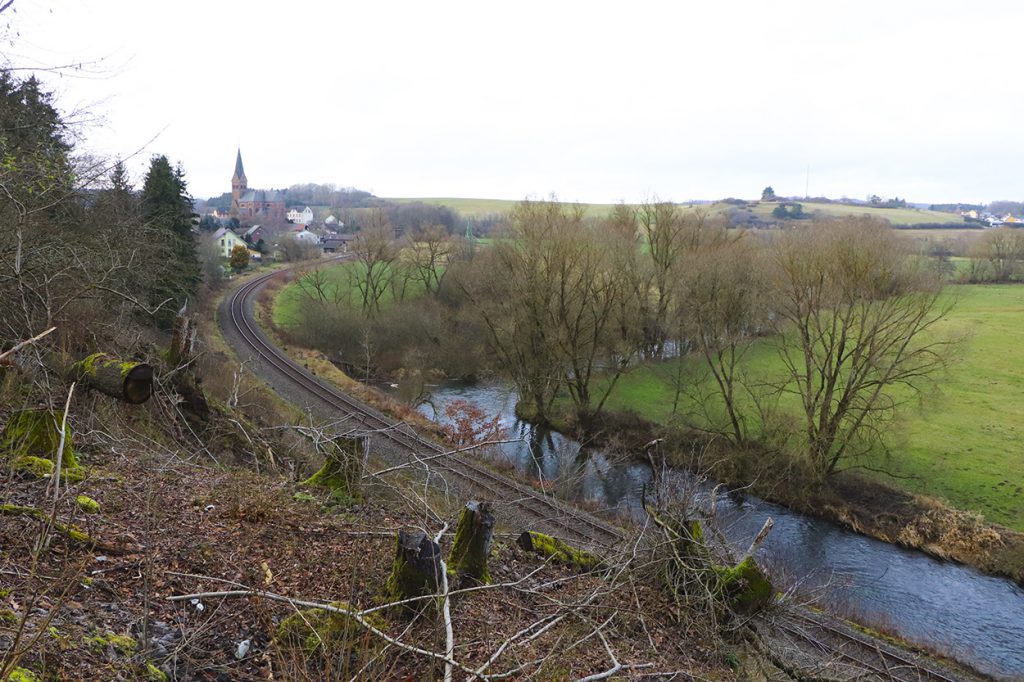PRUEM RIVER CROSSING
Prüm river crossing
28 February – March 1945
Prelude
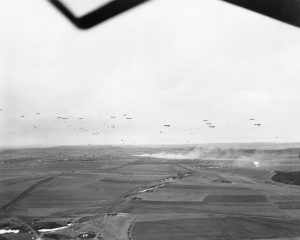
With the drive on Prüm described in detail in the previous chapter on this website, the situation in the 4th US Infantry Division´s sector in mid-February was as follows: Around the 11th of February, the main objective Prüm had been reached, and by the 14th all fighting in the city had ceased. Earlier, on the 8th, the 87th US Infantry Division managed to capture the town of Olzheim further to the north, where a small bridgehead was formed across the Prüm river. Further to the south, the village of Hermespand was taken by the 8th US Infantry Regiment, subordinate to the 4th US Infantry Division. At Hermespand, a bridgehead over the Prüm River was formulating but the Americans abandoned it due to several successful counterattacks from the Germans. With the 4th US Infantry Division now firmly in possession of the area west of the Prüm river, any further advances into enemy territory were halted. In the meantime, the main roads in the Eifel had seen five months of combat, and the previous harsh winter had turned everything into a mud bath. It was impossible for ground supplies to keep up and eventually the supply situation became so drastic that in February the 4th and 90th Infantry Divisions had to be supplied by air. The designated drop zone was selected along the “skyline-drive” west of the Schnee-Eifel, in the vicinity of Radscheid. The troops along Prüm River were given a period of rest after the tough endeavours earlier in the month. Meanwhile, positions were reinforced both on the American and German side.
As previously mentioned, the German 2nd Panzer-Division had left the area and moved to positions further south. Now the 5th Fallschirmjäger-Division was facing the 4th US Infantry Division on its own. This division, commanded by Generalmajor Ludwig Heilmann, was only a skeleton of the unit it was supposed to be. After the destruction of the division in Normandy, it was rebuilt by the end of 1944 in Holland. However, it was composed of all sorts of units from the Luftwaffe that had no experience in ground combat. After the division participated in the Ardennes offensive and the attack on Prüm, only a meager 1,500 men were left. To give reference, by American standards this was roughly the size of a reinforced battalion. Although the Germans had received some reinforcements during the second half of February, these “men” were mere boys who were only 17 to 18 years old. Nonetheless, morale was good among the soldiers.
The 5th Fallschirmjäger-Division was to defend an area approximately 10 kilometers in length, from Kleinlangenfeld up in the north to Niederprüm down in the south. The terrain favored the German’s defense. The frontline was parallel along the Prüm river and ran from north to south. The area being defended was the so called “Prüm-Stellung” which was a small part of the Siegfried line. Although no concrete bunkers were placed in this sector, a trench system was built in the days before the war which advantageously helped the defenders. On top of this, the large hills on the east side of the river which were heavily forested areas, provided good defensive positions. Especially the hills of “Weinsheimer Hardt” (627) and “Dausfelder Hardt” (537) which proved formidable obstacles.
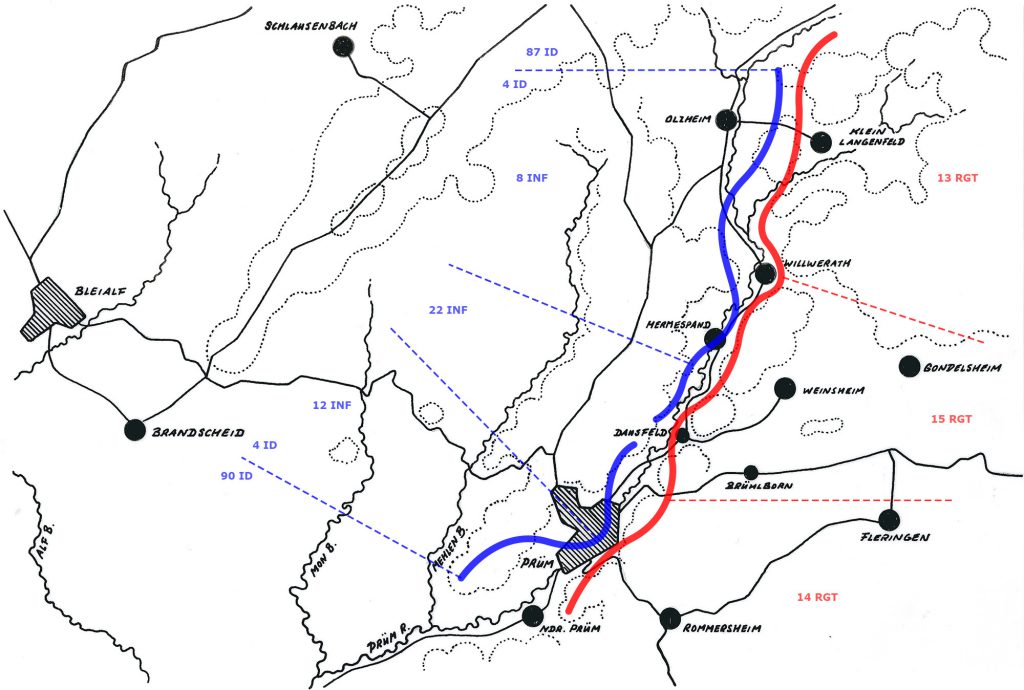
In a north to south defensive line, remnants of the 13th Fallschirmjäger-Regiment were placed from Kleinlangenfeld up to the Mühlbach valley east of Willwerath. Of the original 15 companies in the regiment, only five were left. In total, 400 soldiers were to defend this area which was heavily forested, the exception being the terrain which lay shortly before the village of Kleinlangenfeld. What was left of the 15th Fallschirmjäger-Regiment were eight companies. They defended the area from Willwerath towards the “Hünert” hill (551) at Dausfeld with the strongpoints being the forested hills of Weinsheimer and Dausfelder Hardt. The village of Dausfeld and the hill of Hünert had also been transformed into strongpoints. Remnants of the 14th Fallschirmjäger-Regiment contained a mixture of Luftwaffe troops, two battalions of the 340th and 326th Volksgrenadier-Division, and was reinforced by tank crews who had no tanks left to fight in. They defended the area of Weinsheimer-Held (east of Prüm) towards Niederprüm. For armored support, the 5th Fallschirmjäger-Division could only rely on its own Fallschirm-Sturmgeschütz-Brigade 11 which had just ten “StuG III” tank destroyers left. The ten StuG’s were divided between two batteries, one under the command of Oberleutnant Kauschmann, the other under Oberleutnant Deniffel. Deniffel’s battery was attached to the 14th Fallschirmjäger-Regiment in the vicinity of Fleringen while Kauschmann’s five StuG’s where deployed at Weinsheim. The 5th Fallschirm-Panzerjäger-Abteilung which had some 7.5cm PaK cannons left, was assigned to the 13th and 14th Regiment’s sector. The 5th Fallschirmjäger-Artillerie-Regiment under the command of Oberst Bernd Wintzer had a few Nebelwerfer and 10.5cm Howitzer batteries left, although ammunition was running low. The batteries were located at Duppach, Schwirzheim and Fleringen. The division’s command post was in Duppach.
The above sounds like quite a list, but it was nothing compared to what the Americans had. Opposing the 5th Fallschirmjäger-Division was not only the 4th US Infantry Division but also the 11th US Armored Division, although the armored division stayed in reserve in the opening days of the American attack. The 4th US Infantry Division could rely on three strong infantry regiments, the 8th, 12th and 22nd. These regiments where also called Combat Teams, or in short “CT” (CT8, CT12, CT22). It could also rely on the 70th US Tank Battalion and 610th Tank Destroyer Battalion for support. 4th US Infantry Division numbers counted over more than 15,000 troops, supported by 80 to 100 tanks of the two armored battalions. That meant the few StuG’s of the Germans could count on approximately 80 to 100 tanks attached to the 4th US Infantry Division to be facing them. This is not even taking in account the numbers of the 11th US Armored Division, which sooner or later would also be thrown into the battle. Concerning the American artillery, their numbers and supplies were plentiful. While the Germans had only limited amounts of ammunition and could only fire on targets with the approval of high command, the Americans could fire on targets and strategic areas without interval.
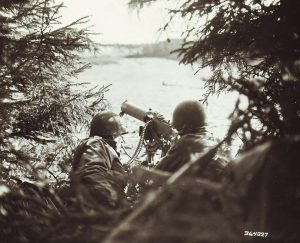
From north to south, CT8 (thus 8th US Infantry Regiment) was positioned from Olzheim towards an area south of Hermespand. From there on CT22 (22nd US Infantry Regiment) took positions towards to town of Prüm. More to the south CT12 (12th US Infantry Regiment) occupied the area from “Kalvarienberg” (569) towards Watzerath. As mentioned, the 11th Armored Division was put in reserve along the Bleialf-Prüm road.
However, what the Americans did not realize was that the dispositions of their regiments revealed something to the Germans. At the high command of the 5th Fallschirmjäger-Division it came to attention that the 22nd US Infantry Regiment occupied the smallest strip of frontline, exactly opposite the Prüm-Büdesheim road. This road ran in a west to east direction over open terrain very suitable for armored movements. For the Germans it was clear, if the Americans attacked, they would know where.
The plan

As part of operation Lumberjack, the First and Third US Army would attack on a large scale in the Eifel sector. The goal of the operation was to capture the west bank of the Rhine river. Different dates were designated to start the offensive. In the north the attack started off on the 26th of February, in the Prüm sector the 28th was chosen. At 0000h on February 27th a secret field order (No. 72) was received at the 4th US Infantry Division’s command post in Bleialf. It informed the division’s commander, General Blakely of the upcoming attack. For his division the time of attack (H-Hour) was set for 0515h on February 28th. On the 27th of February, battalion and company commanders were informed, maps were studied, and briefings were made. Some commanders of CT8 even went up in the air with so called “Piper Cup” reconnaissance planes to study the battlefield and terrain that lay ahead of them. As the Germans successfully predicted, the main objective of the 4th Infantry Division’s attack was to form a bridgehead as soon as possible along the Prüm-Büdesheim road. The capture of the villages: Weinsheim, Gondelsheim, Schwirzheim, Fleringen, Wallersheim and Büdesheim were essential. If a bridgehead was formed, it meant that the 11th Armored Division would have a strong foothold from which it could penetrate further into Germany and advance towards Gerolstein and the Kyll river. When the 27th of February came to an end, the last precautions were made. In the early hours of the 28th around 0300h each regiment sent out two patrols to probe the German frontline and draw fire to locate the enemy positions. Throughout the night the American artillery fired several salvos in the hope to draw fire from the German batteries.
However, the Germans knew something was up. On the evening of the 27th, an alarm was given to the troops. A call from the 15th Fallschirmjäger-Regiment’s command post at 2230h ordered everybody to be on the highest state of alert, as an immediate attack was to be expected. As a result, the order was given to fire from every available weapon on already designated targets. The barrage was planned for 2300h. On time and as scheduled, the German barrage on the American frontline burst loose and lasted for a good 10 minutes. But the barrage did more harm than good, as a result the Americans were now able to pinpoint the precise locations of the German defenses.
February 28th, the first day of the attack
On 0515h the attack broke loose. Under the cover of darkness soldiers of the 8th US Infantry Regiment leaved their positions which they had occupied for the past two weeks. To keep the element of surprise the artillery kept silent. The 3rd Battalion left Olzheim and crossed the Prüm river at several locations. K Company made good progress and was able to advance just short before the village of Kleinlangenfeld. During the advance 12 German’s were captured. I Company however ran into a minefield on the left side of the road leading from Olzheim to Kleinlangenfeld. After their surprise attack was sabotaged by the explosions of several mines, incoming enemy artillery fire was so heavy that the company retreated back to Olzheim. Still under the cover of darkness L Company was able to advance south of Kleinlangenfeld and could occupy the hill of “Hohlscheid” (618) south of the town. But when daylight broke, flanking fire from the hill “Leekopp” (577) prevented any reinforcements from reaching the company. As the day proceeded K Company was able to infiltrate Kleinlangenfeld and took 50 German prisoners in the village. However, stiff German resistance prevented them from advancing any further.
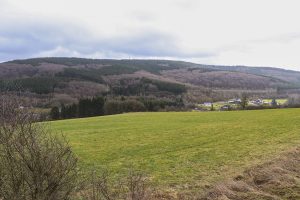
Contrary to the 3rd Battalion, the 2nd Battalion of CT8 had a harder nut to crack. Its main objective was the hill of Weinsheimer Hardt (627), which was defended by the 1st Battalion of the 15th Fallschirmjäger-Regiment. If the objective was taken the attention had to be shifted on the town Weinsheim at once. Under the cover of darkness, the 2nd Battalion attacked leading with three companies. Not long after the Americans stepped foot in the dense forest of Weinsheimer Hardt they were pinned down by heavy small arms fire. Troubled by a series of counterattacks the attack bogged down around noon. By the end of the day a strong patrol was able to reach the slope of the hill but under no circumstances could the Americans say they captured their first objective. The fights in the forest turned out to be chaotic and resulted in several small units being cut off and left to spend the night in the forest without any supplies. The same went for the wounded.
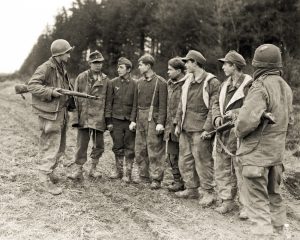
The most important role was given to the 22nd US Infantry Regiment. In the early hours of the 28th, the 3rd Battalion descended from the heights west of the Prüm river in the Wolfsschlucht area. Contrary to CT8, the attack of CT22 was supported by strong artillery barrages. The men of I and L Company crossed the Prüm river at the Dausfelder-Mühle (mill) without any difficulties. I Company under the command of Captain Tom Reid was to turn south and capture the small hamlet of Dausfeld. L Company moved east to seize the hill Dausfelder Hardt (537). As the men of L Company moved up the hill, they directly ran into a German occupied trench system. But after knocking the Germans out with hand grenades they captured the hill by 1035h. Meanwhile earlier in the morning the leading elements of I Company ran into fierce opposition in Dausfeld itself. I Company had no good path to advance towards the village and the open terrain provided no cover against enemy fire laid down from Dausfeld and the Hünert hill. Around 0925h, I Company reported that the first squad that attacked the village along the street Hermespand-Dausfeld was completely annihilated. The Germans were so well entrenched in the village and the surrounding heights that infantry alone could not chase them away. Armored reinforcements could not be brought up thanks to the muddy terrain and several roadblocks laying in the way. Engineers of the division were working on a Bailey bridge over the Prüm river so that tanks could reach I Company, but sniper and artillery fire prevented them from finishing the job. It wasn’t until noon that one of the tanks found a shallow spot to cross the river, and after more tanks joined the attack on Dausfeld. From the direction of Hermespand, some of tanks destined to attack towards Weinsheim with CT8 were ordered to turn around and come to I company’s aid as well. The Germans in Dausfeld were now under attack from two directions and the village could be seized around 1550h.
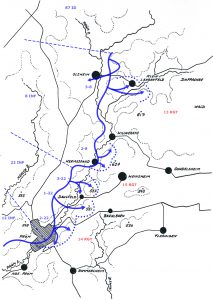
Further to the south the 1st Battalion of CT22 was ordered to attack from the Tettenbusch area and seize the hill of Hünert (551) just above Dausfeld. But after crossing the Prüm river the battalion had already sustained 15 casualties by mines in the valley. Pinned down by machinegun fire the men desperately tried to find a way through the minefield and advance up the forested slope called “Held”, located at the foot of the hill Hünert. After the men finally reached the Held and proceeded their attack on Hünert, their first attack wave was wiped out by enemy machinegun fire as they exited the cover of the woods. After the German positions were shelled by artillery the second wave had more success. And by noon the hill was in American hands. However, two hours later the new owners of the hill came under an immense artillery barrage from the direction of Schwirzheim. Immediately as the barrage lifted the Fallschirmjäger’s set out on their attack. Supported by one Sturmgeschütz the American infantry were forced back toward the forest edge of Held. A new American counterattack supported by artillery fire finally drove the Germans off by nightfall. The open countryside was littered with the dead.
In the early morning of the 28th the 2nd Battalion also descended on the Tettenbusch area. It advanced through the ruins of Prüm and had the objective of seizing the “Prümer Held”, a long strip of steep forested slopes directly east of the city. The 3rd Battalion of CT12 would cover their attack from positions on the Kalvarienberg. Although enemy sniper and mortar fire inflicted casualties in the 2nd Battalion ranks, the men advanced fast and reached the hamlet of Weinsheimer-Held on top of the ridge. But there the Americans were struck by a strong counterattack which almost cut off the American force from the rest. By the end of the day the counterattack bogged down and fire ceased. A further advance on the Prümer Held came to a halt near the “Grüner Sitz”, which is the area with the large bend in the Prüm-Büdesheim road in the direction of Niederprüm. At this location the Americans encountered a large German earth bunker from where heavy small arms fire was received.
During the day the 12th US Infantry Regiment and the 11th US Armored Division stayed in reserve.
March 1st, 1945
The 1st Battalion of CT8 that stayed in reserve the previous day was ordered on the 28th to attack from Olzheim in an south eastern direction through to the woods of “Lückebusch” (617), then take the “Burgring” area and finally push through towards the Jagdhaus of Gondelsheim. The men started their advance in the middle of the night, and by 0725h the first objective Burgring was reached. It was defended by a small company of Fallschirmjäger’s of the 13th Regiment. With the objective taken A Company advanced further to the east and by the end of the afternoon managed to reach the hill “Seimersberg” (663) and was in position just short before the Jagdhaus of Gondelsheim. High command however ordered them to retreat back to the direction of Willwerath. At the regimental command post they were likely afraid the men would be cut off during the night.
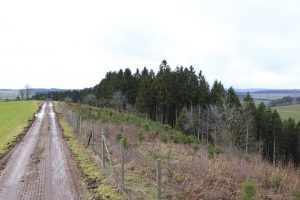
3rd Battalion proceeded in clearing the last few houses in Kleinlangenfeld, which was done successfully. I Company, who the previous day had to retreat due to the problems encountered with the German minefield and the heavy shelling, found another route to attack. In the hours of darkness, it moved through the former positions of K Company on the “Kopnig” hill and took the hill of “Leekopp” at daybreak. It seemed this position was bypassed several times by elements of the 1st and 3rd Battalion during darkness. The position still contained some German soldiers, although only wounded men were encountered as a result of the heavy shelling the enemy position undertook the previous day. The unharmed Fallschirmjäger’s had left the hill in the early morning under the cover of darkness, leaving their dead and wounded behind. As I Company advanced further to the southeast in the direction of L Company, who still held the position on “Hohlscheid”, the men halted when they reached the crest of hill 617 “Lückebusch”. As the soldiers were digging in movement was spotted on their left flank. Thinking this movement was from the soldiers of L Company, the men were surprised when they were counterattacked by a strong enemy force. The Germans overwhelmed the position and several Americans were killed and taken captive. Swift reaction by the company commander who counterattacked the enemy was able to restore the position and contact with L Company was made. Somewhere in the same vicinity Oberleutnant Bartelt, commander of the 1st Battalion / 13th Fallschirmjäger-Regiment was captured together with other officers of his staff.
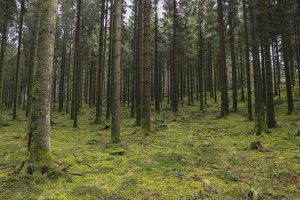
On March 1st, the 2nd Battalion was still struggling in the forest of Weinsheimer Hardt. As the day proceeded the men presumed that the Germans had left the area and the town of Weinsheim by now, however this presumption was incorrect. When the attacking companies advanced towards Weinsheim, determined resistance broke the attack. Throughout the remainder of the day the situation in the thick forested area stayed chaotic. On several occasions, small troops of German Fallschirmjägers bypassed US positions and attacked them from the rear. Supply troops in rear areas were also attacked in this way.
In the sector of CT22, engineers still struggled to finish the Bailey bridge over the Prüm river. This led to difficulties in resupplying the troops in the forward positions. Simultaneously with the 2nd Battalion’s (CT8) attack on Weinsheim, the 3rd Battalion of CT22 advanced from the direction of Dausfeld towards the small hill of “Maienberg”, just short before Weinsheim. While exiting the woods of Dausfelder Hardt, the men were fired upon by the two tank destroyers of Oberleutnant Kauschmann and his attached Fallschirmjägers. The enemy fire caused havoc in the 3rd Battalion ranks, and the men fled or dug in on the east side of the Maienberg, out of sight of the Germans. As the 2nd Battalion’s (CT8) attack on Weinsheim achieved no success, further efforts to take the town were postponed.
Further south in the 2nd Battalion’s sector the attacking companies still met fierce opposition from several earth bunkers in the Prümer Held area. It took the battalion all morning to clear the area. At least 58 Germans were killed, and 112 were taken prisoner. 2nd Battalion then proceeded in the direction of Niederprüm and seized the hill of “Wehlertberg”. During the evening the 2nd Battalion was relieved by the 1st and 2nd Battalion of CT12 so that the battalion could also participate in the attack towards Weinsheim. 3rd Battalion, CT12 stayed in their positions on the Kalvarienberg.
March 2nd, 1945
The 2nd of March meant the third day of the attack. The previous day some harsh words were spoken at the 4th US Infantry Division’s command post because some important objectives still weren’t taken. This third day of attack meant that CT8 finally needed to take Weinsheim, and the capture of Gondelsheim was ordered as well. On the right flank CT22 was assigned to seize the small hamlet of Brühlborn along the Prüm-Büdesheim road and advance further towards Baselt. The newly arrived CT12 was appointed to take Niederprüm on the right flank of the division.
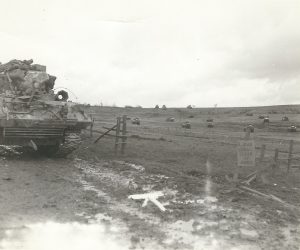
To take Gondelsheim the 1st Battalion, CT8 was ordered to attack from Willwerath, through the “Mühlbach” valley and fan out when the open terrain just before the village was reached. When the attacking force left Willwerath it encountered a formidable obstacle. Not in the form of enemy troops but by a huge bomb crater that was the work of German engineers of the 5th Fallschirm-Pionier-Bataillon. It took Americans all day and through the night until the obstacle was finally overcome. German artillery barrages had destroyed three of the bulldozers that were to fill the crater and caused wounds and deaths amongst the engineers. As a result, the effort to seize Gondelsheim was cancelled around 1530h.
The 2nd Battalion on Weinsheimer Hardt tried for a third time to take the strongpoint of Weinsheim. With a bailey bridge over the Prüm river ready, the attack could partly be reinforced by armor that made its way from the direction of Dausfeld. Three companies attacked, and the tip of the Weinsheimer Hardt was finally reached, and the first houses of the town were in sight. But the Germans denied any further progress. The third attempt to capture Weinsheim had failed. However, the result of this third attack should not be underestimated. The Weinsheimer Hardt forest was now finally in American hands, and this offered a good position for any future attempts to take the town.
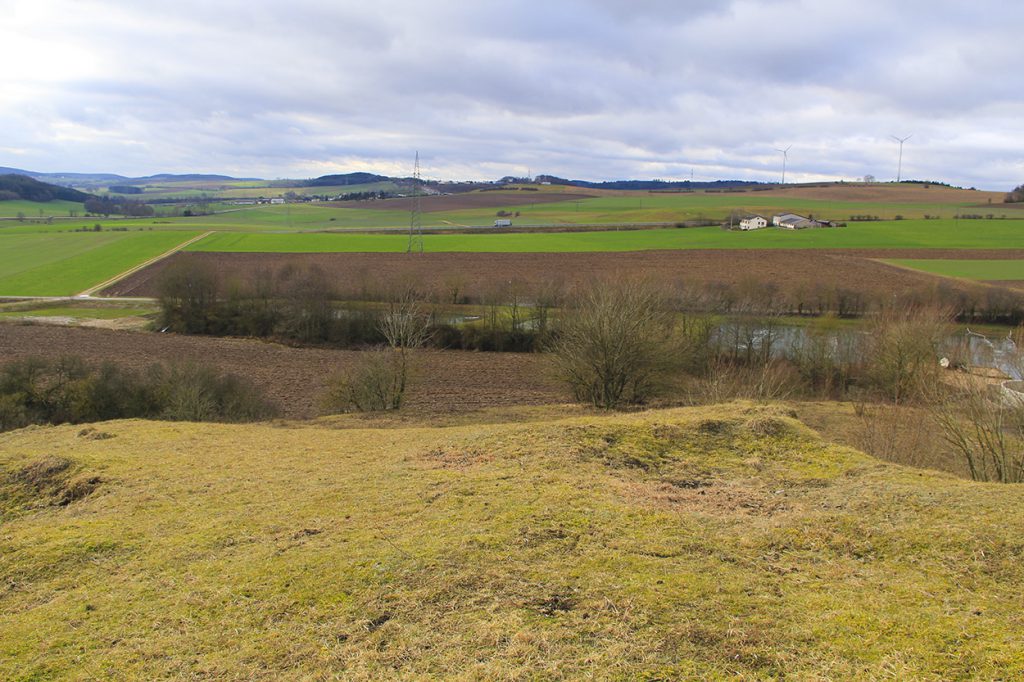
Just like the previous day, CT22 was in an exposed position due to the fact that CT8 still hadn’t conquered Weinsheim. This meant the left flank of the regiment was exposed. There the terrain in the sector of the 22nd consisted of open terrain where the attack of the 3rd Battalion was covered with a curtain of smoke. K Company made some good advance and penetrated deep into the open countryside. Just before the “Niesenberg” hill (543) it was halted by heavy small arms fire. When German artillery from Schwirzheim and Fleringen also joined in it was decided to pull the company a few hundred meters back. From the Hünert hill, 1st Battalion set in their attack against Brühlborn and the small hill of “Loh”. At daybreak the companies left their positions. Supported by a few Sherman tanks the resistance on the Loh hill was broken, and 20 prisoners were taken. As the Sherman tanks took advantage of the situation and advanced further to the east in the direction of Niesenberg they were noticed by one of the German tank destroyers defending Weinsheim. The Sturmgeschütz commander, Oberleutnant Kauschmann, was able to knock three Sherman tanks out and the fourth went up in flames thanks to another StuG of Kauschmann’s battery. Already at 0900h the attempt of the 1st Battalion to reach Niesenberg and Baselt was unsuccessful. Somewhat irritated the 22nd Regiment made a call to CT8 explaining again that their failure to capture Weinsheim had resulted in the loss of four tanks in their sector.
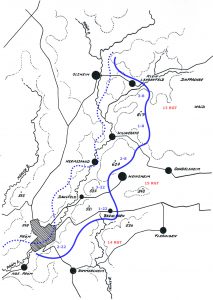
However, with the Loh hill in American hands, A Company of the 1st Battalion moved in to take Brühlborn. The attack would take place from three directions: from the Loh hill in the north, from the west along the Prüm-Büdesheim road and from a small patch of woods southwest of the hamlet. Aware that some retreating enemy forces from the Loh hill had occupied the houses of Brühlborn the attack started from three directions. The attack was met which such fanatical resistance that A Company was forced to retreat back to their original positions, leaving the dead and wounded behind. After the regiment insisted that Brühlborn should be taken, another attempt was made. This time the attack was covered by mortars and tanks that were firing from the Loh hill into the small hamlet, and eventually German resistance slowly died down. The small hamlet of three houses was finally taken by the end of the day. Around 50 prisoners were taken, but at a high cost.
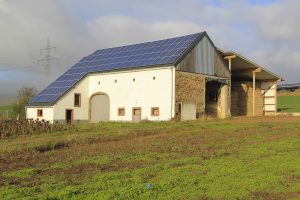
The result of CT8’s and CT22’s advance on March 2nd meant the situation for the Germans in Weinsheim had become critical. The 5th Fallschirmjäger-Division’s commander Heilmann ordered the German troops defending the town to retreat back to the village of Gondelsheim at 2300h that evening.
German artillery barrages from Fleringen gave CT12 some difficulties in the vicinity of Niederprüm, however the hills east of the village were taken on the 2nd of March. Niederprüm was now encircled, but the enemy had already retreated towards Rommersheim.
March 3rd, 1945
Meanwhile, on this fourth day of attack the Americans had succeeded in penetrating the entire Prüm river line. However, it was only one to two kilometres in depth. Although the 5th Fallschirmjäger-Division allowed the Americans only small progress, their situation was dire. They could not count on the same number of forces, and in particular reinforcements like the Americans had. On the 3rd of March only around 600 men were left to be thrown in against the American attack. East of Kleinlangenfeld the 13th Fallschirmjäger-Regiment occupied a frontline running from the hill of Herescheid (610), through the thick forest south of the village towards the Jagdhaus of Gondelsheim. The open plains along the Prüm-Büdesheim road where defended by remnants of the 15th Regiment and what was left of the 11. Fallschirm-StuG-Brigade. Three of the tank destroyers took position in Gondelsheim, German infantry still occupied the Niesenberg and another two tank destroyers defended the small hamlet of Baselt, together with one 7,5cm PaK of the Panzerjäger-Abteilung. The last remaining tank destroyer was placed in Fleringen. Finally, the 14th Regiment occupied positions in the vicinity of Rommersheim. What is important is to mention is that the allied advance over the Prüm river by this time finally resulted in a firm bridgehead over the river. This meant strong armored forces could be brought in amass. The remaining six German tank destroyers could expect the worse.
As daylight broke on the 3rd the 1st Battalion of CT8 made another effort to take Gondelsheim. With the large crater in the Mühlbach valley filled, the attack was supported by no less than 40 Sherman tanks of the 70th Tank-Battalion. As soon as the tank column reached the end of the Mühlbach valley the Americans were under fire from Kauschmann’s StuG battery in Gondelsheim. At least four Shermans were knocked out by the Germans. The rest of the column retreated back towards the valley; the attack had been blown off. An effort from C Company to throw the German’s out of the Jagdhaus in the woods north of the village also failed. The 2nd Battalion succeeded in clearing the last part of the Weinsheimer Hardt. In the north, the 3rd Battalion reinforced their position in the woods south of Kleinlangenfeld as to defend the left flank of the regiment.
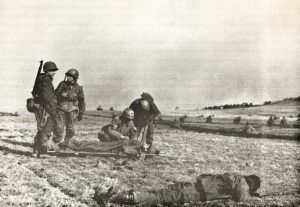
A Company of CT22 that had captured Brühlborn the day before was ordered on the 3rd to take the hill of “Kramberg” (530). This ridgeline lay south of the small hamlet, parallel along the Prüm-Büdesheim road. Against moderate resistance the men were able to take the ridge by the end of the day. The German defenders had fled back towards Fleringen. 3rd Battalion had the objective of finally capturing Weinsheim. As the Americans didn’t know the Germans had already withdrawn from the town the night before a strong patrol was sent out in the early morning. It found the town free of Germans, finally after four days and uncountable losses, the town was seized by I Company. As the infantry proceeded further towards Niesenberg they were fired upon from the Germans still defending the small hill, resulting in several casualties.
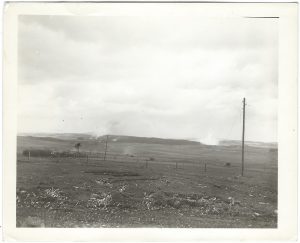
With Weinsheim firmly in American hands, the 11th Armored Division could finally participate in the fight. With more than 10,000 men and 250 tanks, the “thunderbolt” division lived up to his name. On the 3rd of March around 100 tanks participated in the battle. From the “Kahlbach” valley the tanks moved through Weinsheim and occupied the Niesenberg, from which they fired on the small hamlet of Baselt. During the attack one tank was knocked out by an enemy 7.5cm Pak concealed in the Baselter woods. Another two tanks where put out of action by mines. By the end of the day Baselt and Fleringen were captured by Combat Command B, part of the 11th Armored Division.
During the day CT12 was able to take Rommersheim against only light resistance. 3rd Battalion took Niederprüm by morning and was ordered to move to Fleringen the next day to relieve elements of the 11th Armored Division.
March 4th, 1945
The events of the previous day had a positive outcome. For the first time during the start of the offensive large amounts of armor could be brought to the fight, and five strategic villages had fallen into the hands of the Americans. Finally, the German front was collapsing!
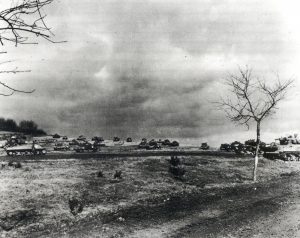
During the night of 3/4th of March the German positions around Gondelsheim and the Jagdhaus were given up. The exhausted Fallschirmjägers of the 15th Regiment retreated back towards Schwirzheim, where a new frontline was formed. The remnants of the 13th Regiment had received some reinforcements the previous days and still occupied the area east of Kleinlangenfeld, all the way through to woods in the direction of Schwirzheimer Kopf (638). Defending Wallersheim and the woods southeast of Rommersheim was the 14th Fallschirmjäger-Regiment with 250 men. The command post of Generalmajor Heilmann was moved from Duppach towards Scheuern.
After the American artillery covered Gondelsheim in smoke, the 1st Battalion of CT8 set in their attack. They found the village unoccupied by the Germans who, as previously mentioned had retreated towards Schwirzheim during the night. Simultaneously A and C Company took the Jagdhaus and pushed further towards the Schwirzheimer Kopf. Further to the north 2nd Battalion had the objective of clearing the large woods between Gondelsheim and Kleinlangenfeld. With three companies it attacked from the area of Burgring in the direction of Prümerkopf. Stiff resistance was encountered from earth bunkers and dugouts, which were occupied by soldiers of the 13th Regiment. However, at the end of the day the Fallschirmjägers retreated towards Duppach. At dusk, the men of the 2nd Battalion dug in and small outposts were placed along the line. For the soldiers the chaotic, disorientating and confusing battles that were fought in the thick forest the past few days had worked on their nerves to say the least.
Meanwhile the 3rd Battalion of CT8 had moved east from Kleinlangenfeld in the direction of Steffeln. Good progress was made. The main opposition encountered were roadblocks and mines. Halfway along the Kleinlangenfeld-Steffeln road the men halted and dug in for the night.
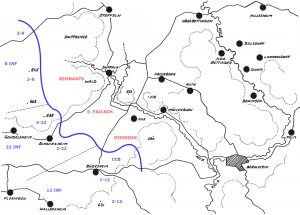
On March the 4th, CT22 was appointed to take the town of Schwirzheim and succeeded so against almost no opposition. Elements of the 11th Armored Division and CT12 reported that it took Wallersheim and also Büdesheim. Finally, the front was moving fast! From the Germans only small delaying actions were encountered, it seemed everything in the enemy sector was retreating towards the Kyll river. But even these small delaying actions by the enemy proved to be dangerous.
As the Americans took Büdesheim, the road towards the large town of Gerolstein was in immediate danger. A hastily formed defensive line by Oberleutnant Kauschmann and some Fallschirmjägers of the 15th Regiment took positions in the Hengscheid (550) and Fürstenberg area immediately east of Büdesheim. The four tank destroyers of the 11th Fallschirm-StuG-Brigade where able to knock out four Sherman tanks. Bad luck had it that two of the four tank destroyers were lost during the fighting. One was lost by tank fire, and the other one collided with another retreating tank destroyer as the Germans finally were forced to abandon their positions.
March 5th, 1945
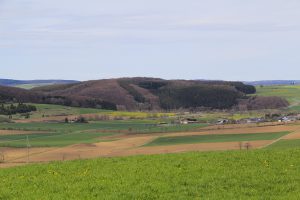
From this point on the German frontline was so chaotic it is hard to say which units occupied which sectors. However, what is known is that the German main line of defense ran from the east edge of the Aueler and Duppacher forest, then over Duppach itself. From there on the hills east of the small Oos creek were occupied, such as the “Ammelsbusch” (520) and “Lenzerath” hill (519). The village of Oos was still in German hands as were the woods southwest of Müllenborn.
On the 5th of March, CT8 was ordered to clear the Aueler and Duppacher forest and take the Jagdhaus of Duppach. After five days of hard fighting the 1st Battalion was put to rest in Göndelsheim. When the 2nd Battalion attacked in the direction of Duppach it met almost no opposition, and the same went for the 3rd Battalion’s attack. The main problem faced in the woods were minefields. By the end of the day both battalions halted their advance and were happy to be relieved by elements of the 87th US Infantry Division.
In the 22nd ‘s sector the 1st Battalion was also appointed a well-deserved period of rest. The remaining 2nd and 3rd Battalion were to advance along the Schwirzheim-Duppach road. 3rd Battalion was appointed to take Duppach itself and 2nd Battalion was to seize the hill Ammelsbusch west of the Oos creek. Patrols that were sent out towards Duppach in the early morning discovered a number of German soldiers in the village who were ready to surrender. The 3rd Battalion moved in at once and the village was secured. Around 0620h the 2nd Battalion reported they had seized the hill 514 in the immediate area of “Leimertsseifen” and were ready to advance against Ammelsbusch. As the men climbed up the steep slopes of the forested hill, they encountered heavy German small arms fire and the attack had to halt. With the bulk of the 11th Armored Division waiting in the Oos valley for the hill to be cleared, orders from Corps and Division insisted that Ammelsbusch, as well as the Lenzerath hill should be taken at once. As the men made their second attempt, heavy artillery and rocket launcher fire rained down on them, followed by a counterattack of approximately 100 Fallschirmjägers. Nonetheless the objective of Ammelsbusch was taken.
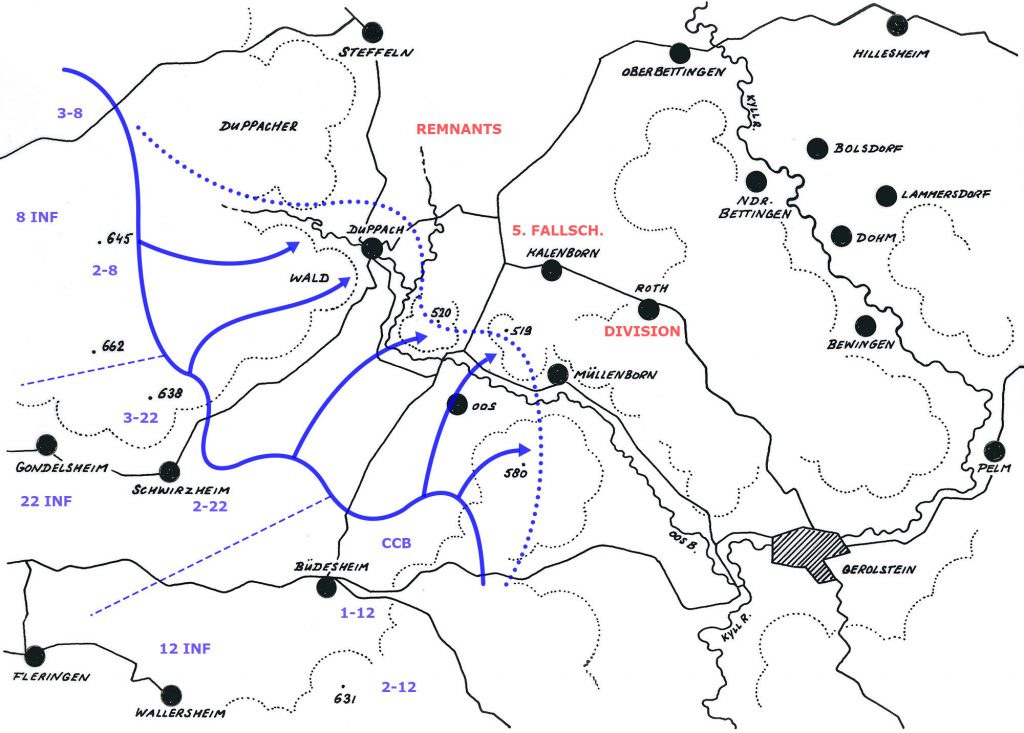
With the German opposition growing ever weaker by the day, CT12 was able to leave one battalion in reserve. The 1st and 3rd Battalion were to seize Oos, the Bahnhof Müllenborn and the woods of Ooser-Nase (580) southwest of Müllenborn. Small arms fire was received from Oos, but nonetheless the 1st Battalion was able to seize the town after their attack was supported by some tank destroyers. Crossings were made over the Oos creek and by the end of the day the Lenzerath hill was partly occupied. On Lenzerath only small opposition was met despite probably all the available German troops were used for the counterattack against the 22nd Regiment at Ammelsbusch. By the end of the day all objectives were reached except for the Müllenborn Bahnhof. During the day the 11th Armored Division couldn’t participate in the battle because it took the infantry all day to secure the hills of Ammelsbusch and Lenzerath. The result was that the attack on Scheueren and Oberbettingen had to be postponed for the next day.
March 6th and 7th, 1945

As CT12 was able to seize the hill of Lenzerath entirely during the night, it meant that Combat Command B of the 11th Armored Division could finally set in their attack against Scheuern and the predesignated crossing sites over the Kyll river in the vicinity of Nieder-Bettingen. After the men and armor crossed the Oos creek, the attack proceeded fast. Kalenborn and Roth were captured against almost no opposition and by 1100h Nieder-Bettingen was reached. Around the afternoon strong patrols of CT12 took Bewingen. From Duppach the 11th Armored Division was able to reach Ober-Bettingen around 1500h, and as the Americans entered the town the bridge over the Kyll river was blown. An estimated force of 200 Fallschirmjägers occupied the east side of the river and sniper fire during the day prevented any movement by the Americans in Ober-Bettingen. By dark however infantry troops waded through a shallow spot of the river and drove the Germans out of their positions. Near the village of Dohm, infantry and two medium tank companies of the 55th US Armored Infantry Battalion had forded the river as well. During the evening and night of March 6th two small bridgeheads were established. It is obvious that at this time the Germans couldn’t bring in much to stop the overwhelming allied forces.
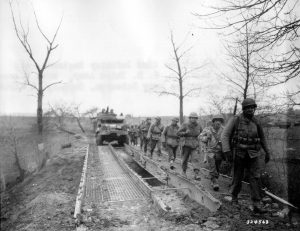
Meanwhile at midnight the 4th US Infantry Division had relieved parts of the 11th Armored Division. There high command had decided that the 11th Armored would continue its attack through the 90th Infantry Division’s sector who had already captured Gerolstein and had formed a firm bridgehead over the Kyll river at Lissingen. This meant expanding the two small bridgeheads in the vicinity of Ober-Bettingen and Dohm would be the task of the 4th Infantry Division. CT22 immediately directed two strong patrols towards Hillesheim and after entering the town the men encountered no organized resistance. At daylight large German entrenchments, roadblocks and earth bunkers were encountered, which had been dug by slave labour forces for the defense of the town. The positions however were never occupied as the Germans were withdrawing to fast to get organized. At the Dohm bridgehead German opposition was more serious. As CT12 relieved parts of the 11th Armored Division, stiff enemy resistance was encountered at Bolsdorf but nonetheless the village was captured by the 1st Battalion. As the 2nd Battalion entered Lammersdorf a large enemy force was spotted withdrawing from the town in an eastern direction. A coordinated attack from 1st and 2nd Battalion inflicted heavy casualties among the enemy, and a high number of prisoners were taken. The wooded hills between Bewingen and Rockeskyll were finally taken by the 3rd Battalion against stiff resistance from the last remaining men of the 15th Fallschirmjäger-Regiment. But at the end of March 7th the advancing allied forces practically met no organized resistance along the entire front. By the end of the day a firm bridgehead over the Kyll river was made by the 4th Infantry and 11th Armored-Division. The bridgehead went from Hillesheim as far as Zilsdorf and Walsdorf.
Aftermath
On the 8th of March elements of CT8 together with the 70th Tank Battalion formed a taskforce nicknamed “Rhine”, and they would advance further to the east. The other elements of the 4th US Infantry Division would stay in the vicinity of Hillesheim and provide security, but more important enjoy a period of rest before the division was finally taken from the line and moved to France. From February 28th it had took until the 7th of March to advance over the Prüm river and to establish a firm bridgehead over the Kyll. The opening days of the Lumberjack offensive saw only small gains in the Prüm sector, and it must be said that the few German forces, lacking supplies, reinforcements and armor did a formidable job in holding off the first waves of the American attack. The enemy used the terrain in such an advantage, that is was only after the open plains between Gondelsheim and Fleringen were reached that the allies were able to take any noticeable amounts of ground. After the frontline had shifted to more favourable positions for the American forces, and the entire weight of their resources could be brought in against the enemy, the Germans simply lacked the manpower and strength to put up any serious defense. The last weeks of the war had begun and what remained of the 5th Fallschirmjäger-Division including its commander was captured at Adenau, Nurburgring and Laacher See. Only a few elements were able to retreat as far as the Harz Mountains in April 1945.
